Turkmenistan
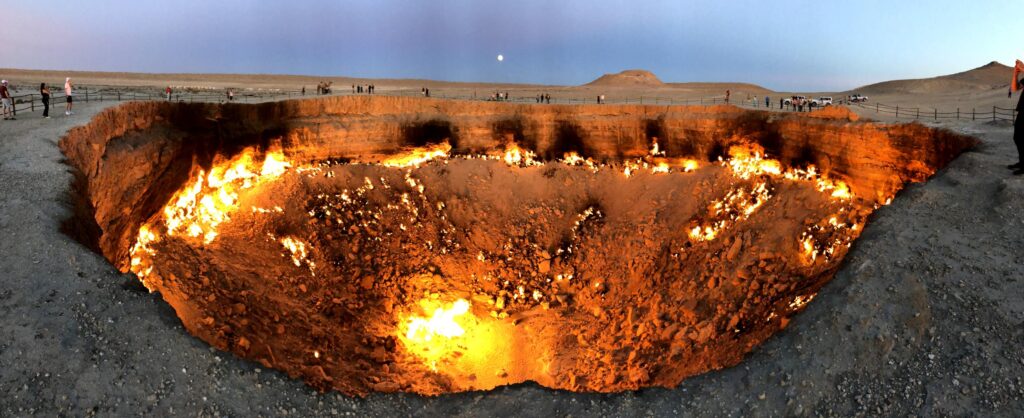
The most famous landmark in Turkmenistan and my main reason for going there was to see the Darvaza Gas Crater, aka The Gates of Hell. This crater, 70 meters wide and 30 meters deep, was created in the early 1970’s when a Soviet energy company drilled a well here hoping to find natural gas (methane).
Although the Soviets found gas, they also discovered that their well was located on top of a limestone solution cavern. Soon after the well was drilled, the roof of the cavern collapsed creating a sinkhole which swallowed the drilling rig — and perhaps some of the drilling crew. (The exact nature of this disaster is unknown because the Soviet records are classified.)
This wasn’t the only problem. Because the well had punctured a gas reservoir, the crater leaked gas from multiple vents. It’s believed that the crater was deliberately flared (ignited) to burn off the poisonous methane. But no one anticipated that the gas reservoir was so large that the crater would still be burning fifty years later — with no sign of abating. This is something I had to see.
Last year, Turkmenistan announced plans to extinguish the Darvaza Crater, so I had to move quickly! I timed my visit to be on site during a full moon. Gazing at bright flames filling the night sky with an eerie pink glow, feeling the intense heat radiating from the crater, while watching the moon rise over the Turkmenistan desert was a spine-tingling experience. The Gates to Hell is a good name for this place.

Turkmenistan is not an easy country to visit. With fewer than 15,000 tourists per year, it’s well off the tourist track. Like North Korea, tourists are not allowed to travel independently. Currently, the only way to visit Turkmenistan is with an authorized group tour. I went with Young Pioneer Tours. Although we were a fun and sociable gang, 45 traveling companions were too many! At least we had knowledgeable local guides to educate us about this odd, isolated country.
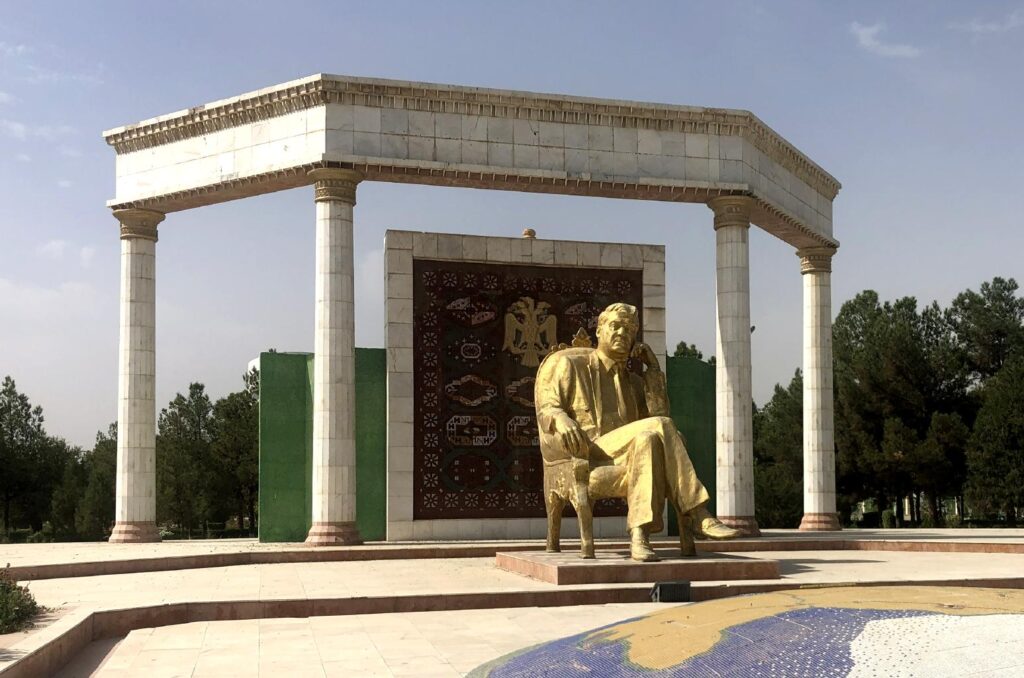
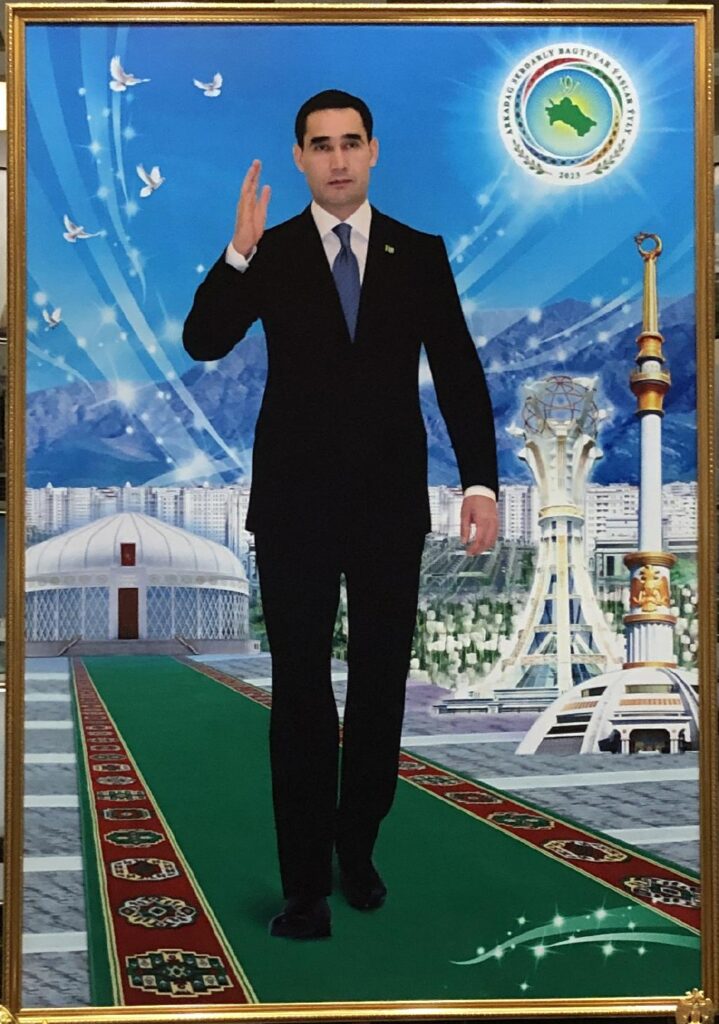

Since its independence from the Soviet Union in 1991, Turkmenistan has ben ruled by three dictators, each of whom erected monuments to himself. There are statues, paintings and memorials of the dear leaders everywhere. Although it’s forbidden to make disparaging remarks about them, Turkmenistan is slightly more relaxed than North Korea. We were allowed to touch the statues and take selfies with them.
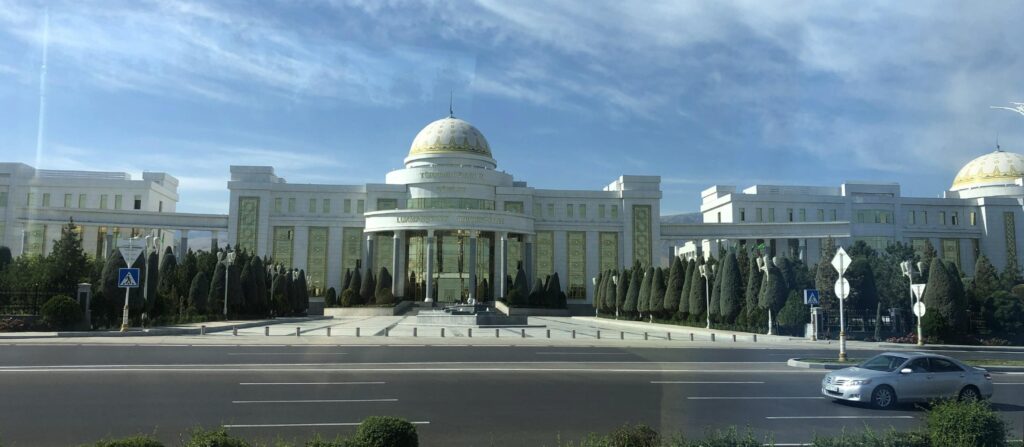
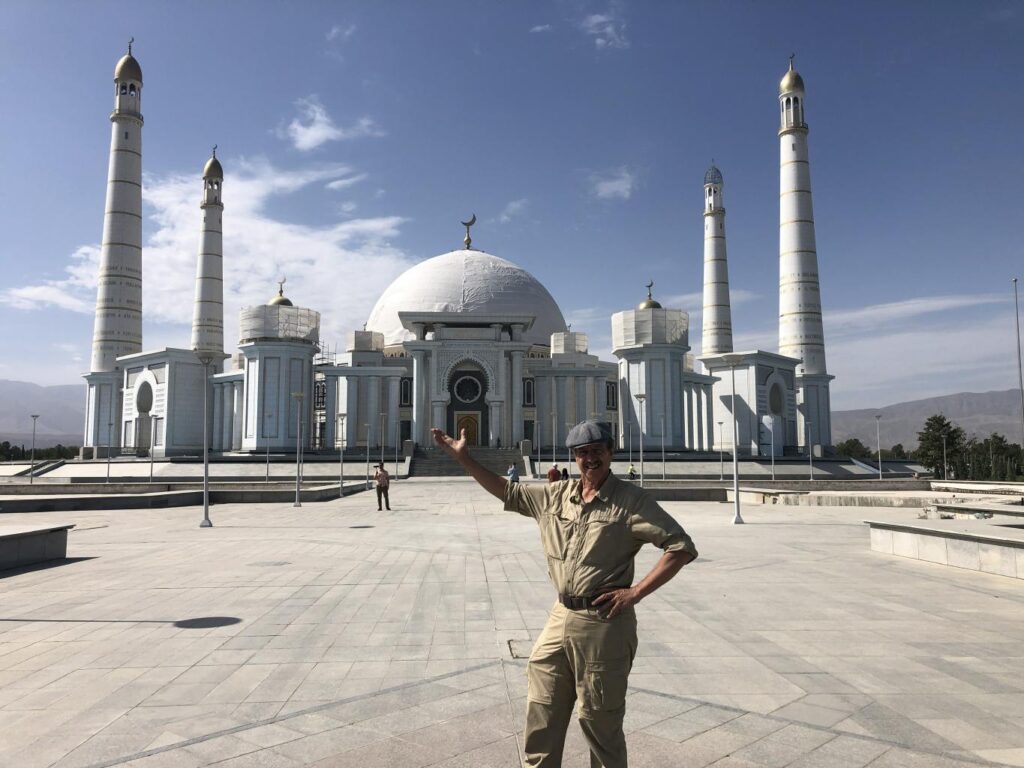

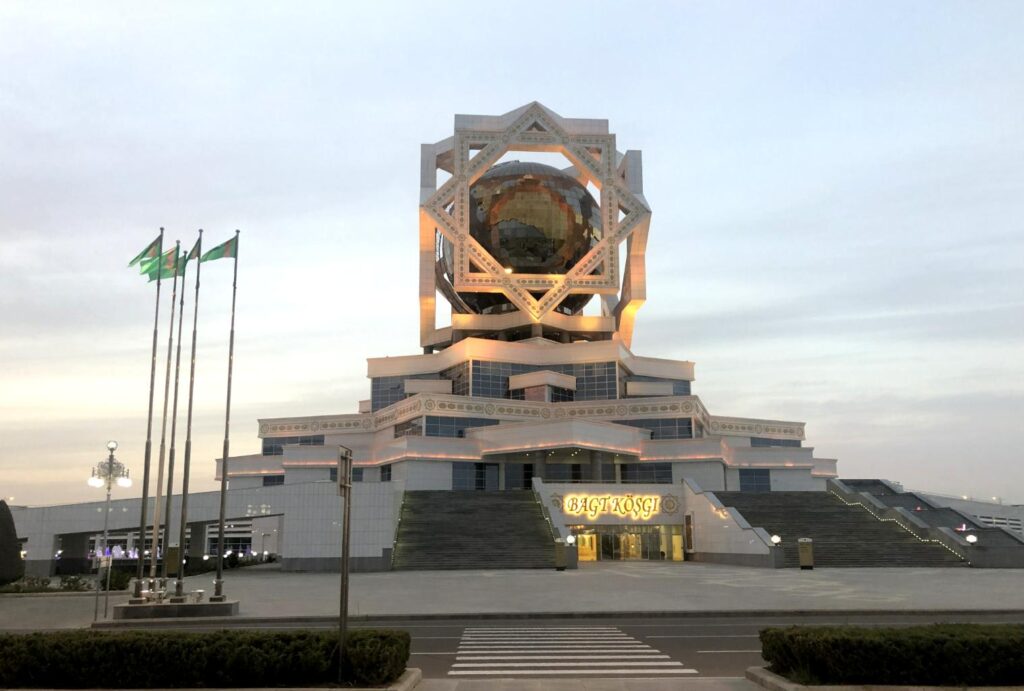
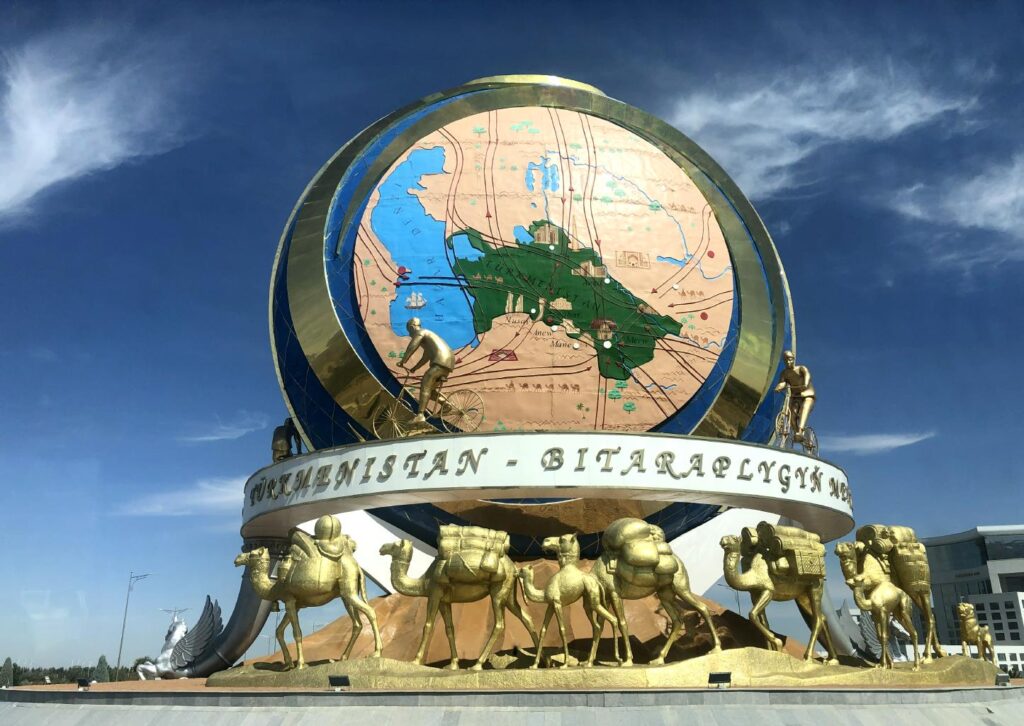
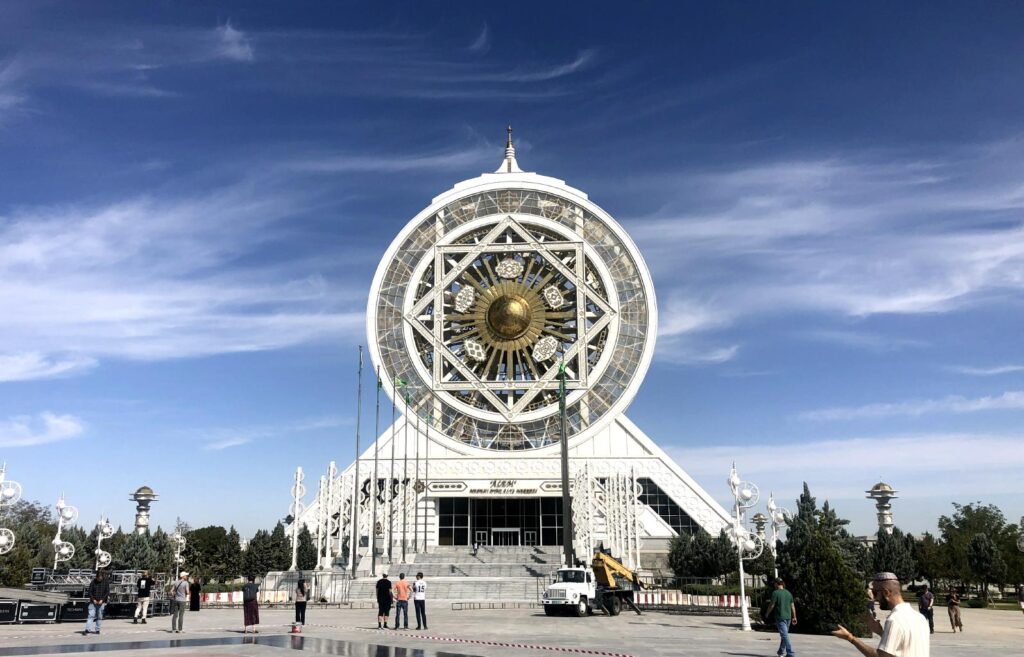



Turkmenistan is full of impressive buildings and monuments that proclaim the country’s national pride. The capital, Ashgabat, is known as The White City because it has the world’s highest concentration of white marble-clad buildings with 543 in an area of 4.5 km2. Ashgabat also has world’s most fountains in public spaces, and the world’s largest enclosed Ferris wheel known as The Wheel of Enlightenment. The unique look of Ashgabat is due to president Gurbanguly Berdimuhamedow’s obsession with breaking records.
Ashgabat is the cleanest, whitest city I’ve ever seen. Even the cars, buses and trucks in Ashgabat are white — by law! (Exceptions are made for diplomats and dignitaries whose cars may be silver or gold.) Vehicles registered in Ashgabat may not leave the city, and vehicles from outside the city cannot enter Ashgabat. This prevents vehicles from tracking dust or mud into the capital. (I suspect this rule also prevents weapons or bombs from entering the capital,)
There are street cleaners in all the parks and public spaces. There’s never a cigarette butt on the sidewalks because Turkmenistan prohibits the sale and use of cigarettes and e-cigarettes. Although Ashgabat is spotless, it’s rather empty because the only people on the sidewalks are the street cleaners.
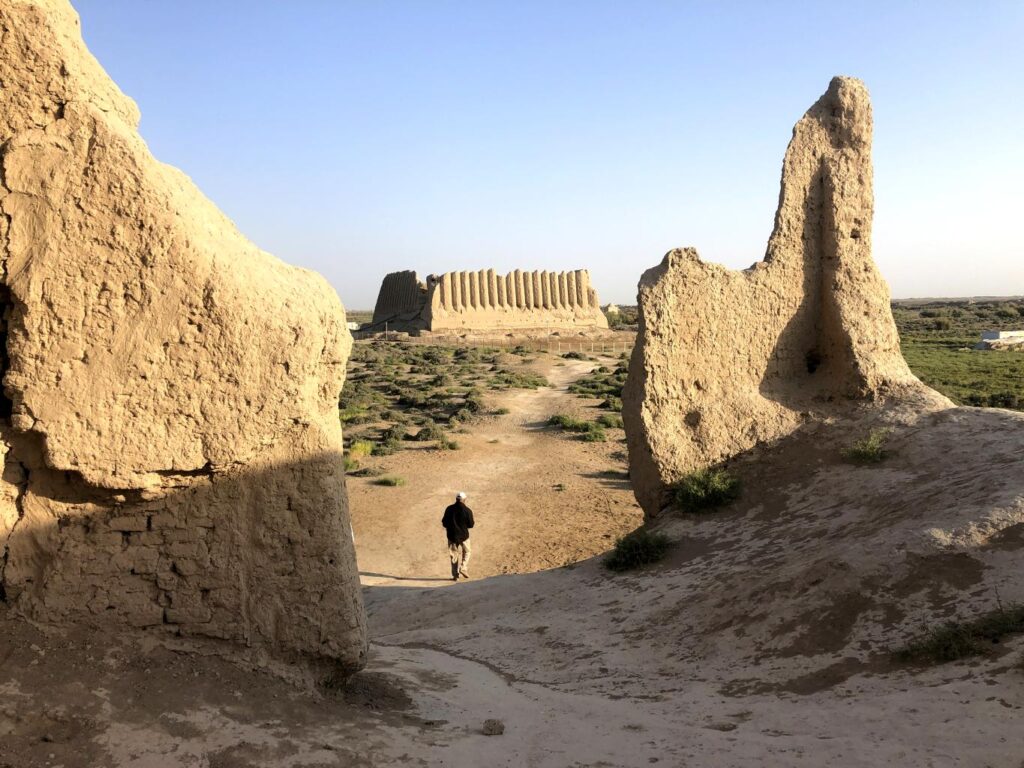


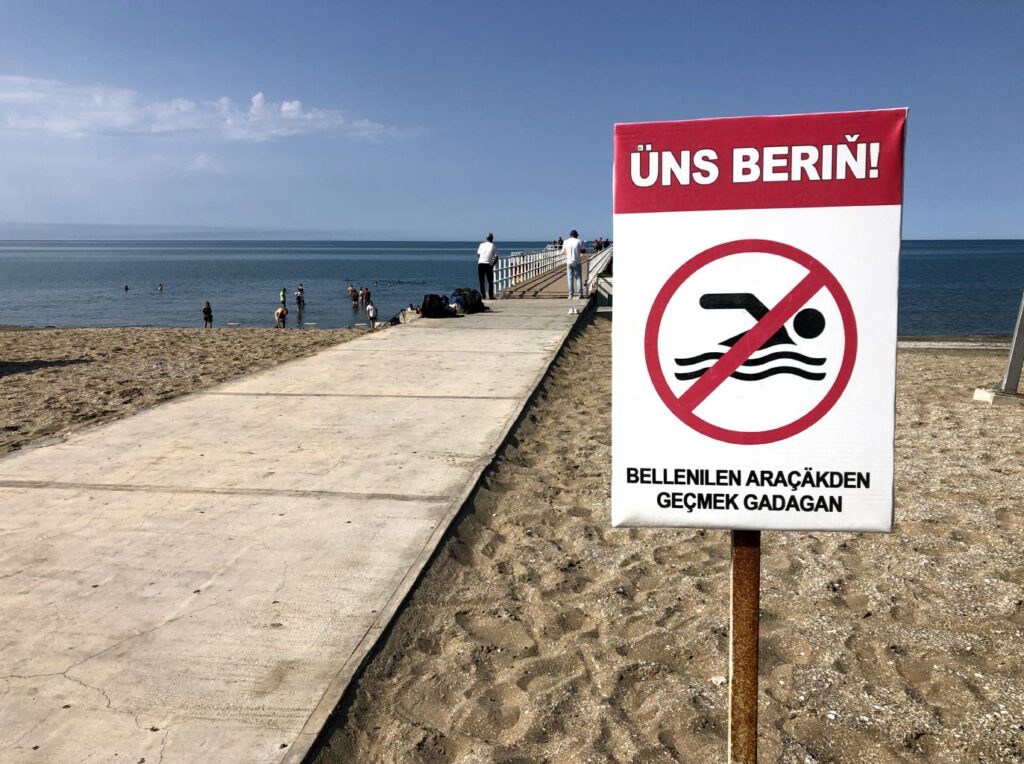
In centuries past, Turkmenistan was a thoroughfare of the Silk Road. During the 12th and 13th centuries, an oasis in the east end of the country known as Merv may have been the world’s largest city, with a population of up to 500,000. Today, Turkmenistan is 70% desert and is sparsely populated. Its economy is based on gas and cotton.
Turkmenistan’s western boundary is the Caspian Sea. Although the posted sign said “:No Swimming,” I can now say that I’ve swum in the Seven Seas. The Caspian is actually a lake, of course, and it’s by far the world’s largest lake.
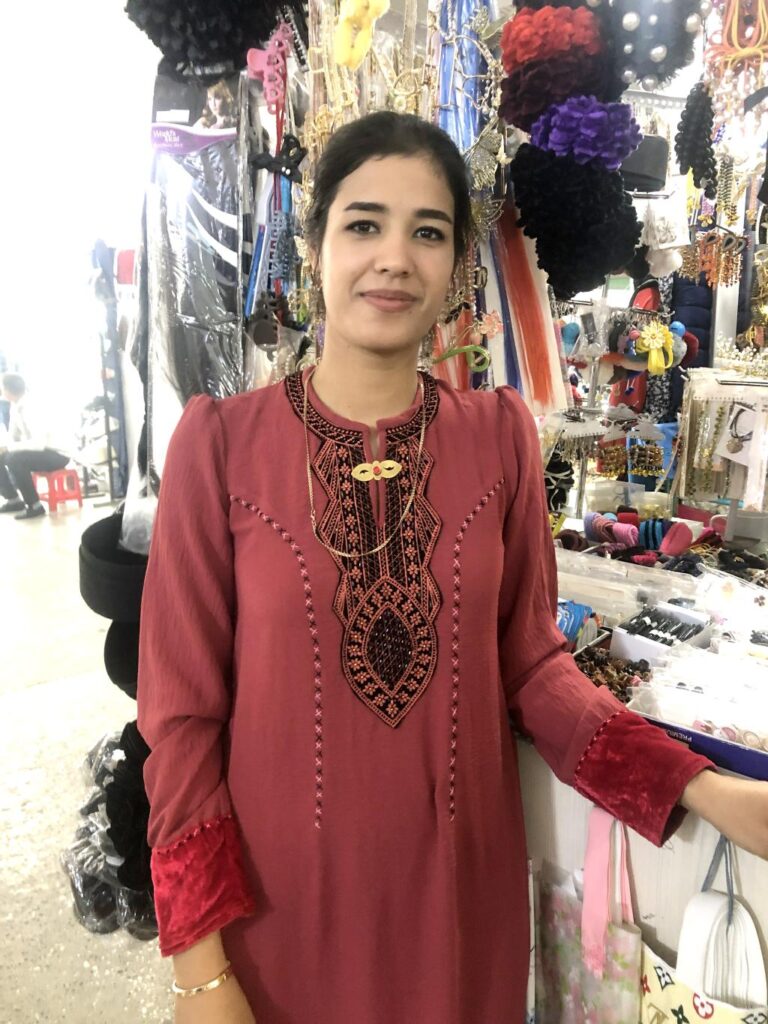
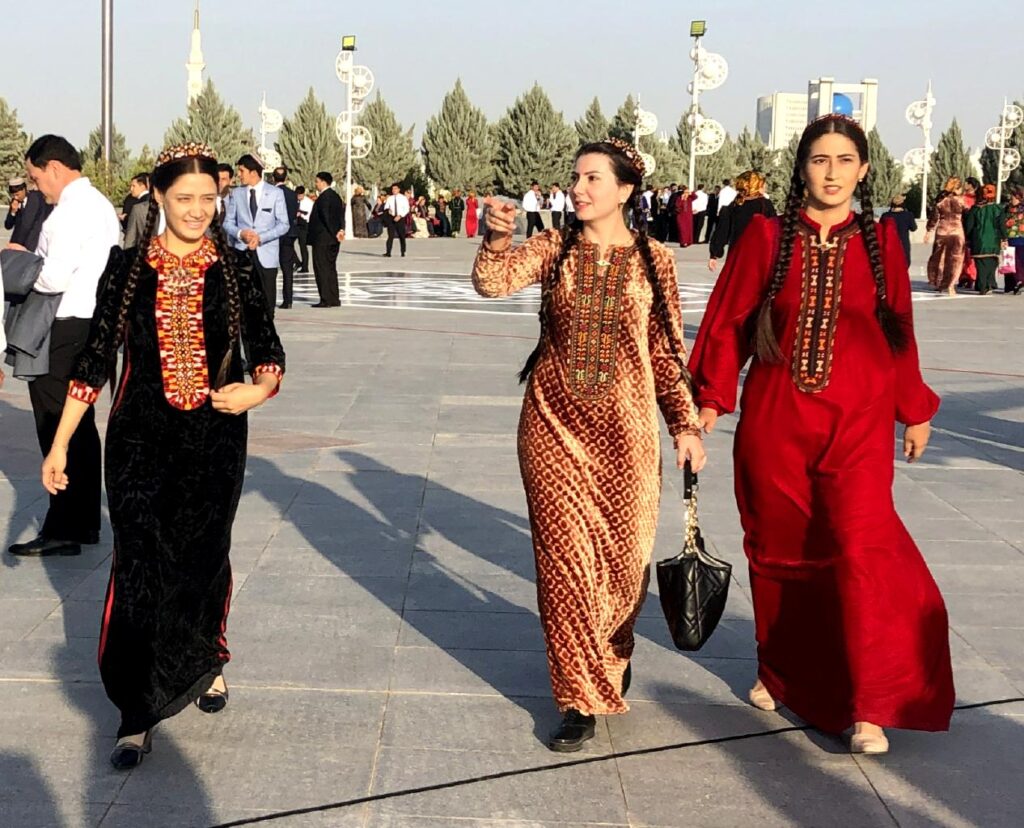
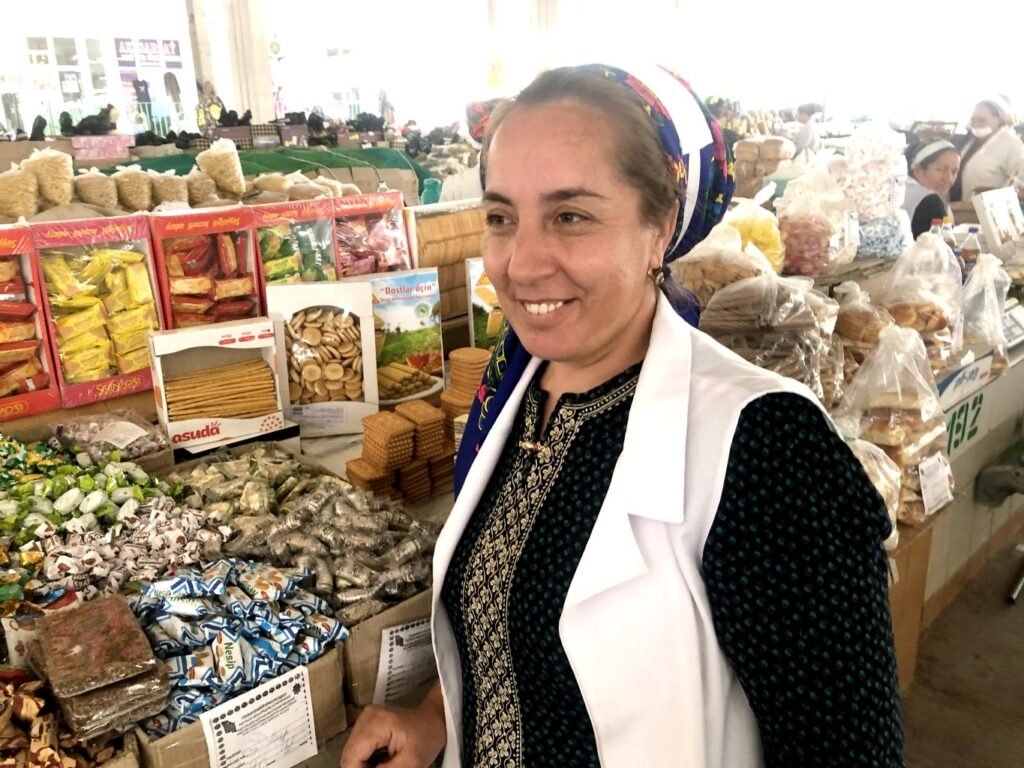
Traveling in a group of 45, it’s not easy to interact with locals. The few that I met spoke English and were surprised and interested to meet foreign tourists.


We ate delicious central Asian food with an emphasis on mutton, vegetables and stuffed flatbread.
Our group was in Turkmenistan for their National Independence Day September 27. We were allowed to attend 30 minutes of an outdoor musical performance. (see video above) Here are photos of the military parade that we weren’t allowed to see.
Like North Korea, there’s a difference between what a visitor is allowed to see and what’s actually here. The video above is an official music video featuring Turkmenistan’s cultural and natural beautify. This is clearly government propaganda. After a week in Turkmenistan, I have the impression that many of its citizens are poor, have limited education and few opportunities — but I didn’t see any of this reality.
After leaving Turkmenistan, I got a good laugh out of Trevor Noah’s commentary about the former president, Gurbanguly Mälikgulyýewiç Berdimuhamedow. (His son now rules the country.) This video was produced in 2018 but it gives a sense of what living under a dictatorship with strict censorship laws might be like.
I’m thrilled to have camped for a night in a yurt next to the Darvaza Gas Crater, Although I’m glad to have visited Turkmenistan, I don’t need to go to there again. There are still many other places on my “bucket list.” Stay tuned.


Fascinating!
Ashgabat is the strangest city I have been to… you described it quite well. We were with a small group (15) touring the “Five Stans”, but I tour leader was not able to get a visa to Turkmenistan, so we were turned over to a local. When we asked at 8 am where all the people were she answered, “they are home fixing breakfast”. When we asked the same questions at 9 am, she answered that “they were all in the office”…and so on.
The horses, the air terminal, the ever-present monuments were all a sight to see.
An amazingly overwhelming city, the monuments are spectacular. But the country sounds frightening in its restrictive laws and policies and the iron-handed rule of its leader. NOT a place that will be going on my bucket list!
What a show in a very secluded country. Keep on truckin’ brother.
You can always trust Trevor to entertain and inform you in the same time. Beautiful country, very beautiful women, very behaved audience at that concert. (Very hard to know of they enjoyed the concert, or they were forced to be there :))
A lot of ‘very in my message as well :))
Thank you for the vlog,always a pleasure to read them.